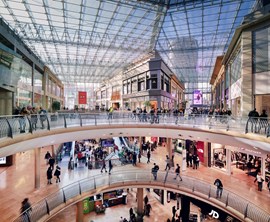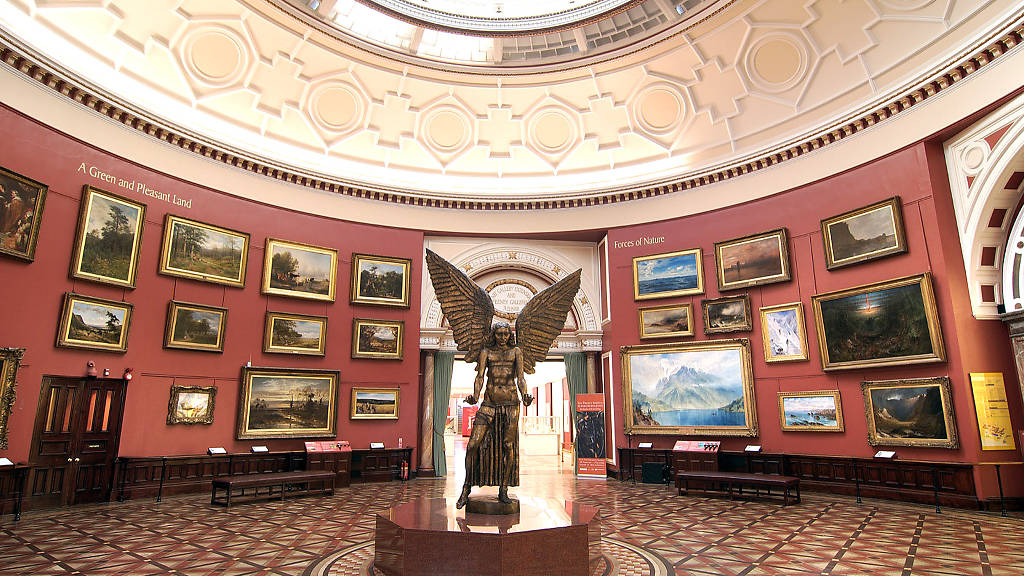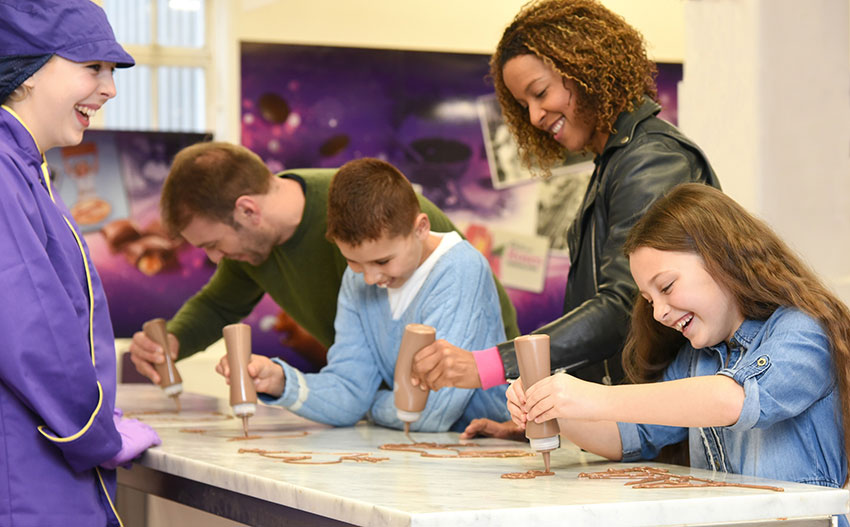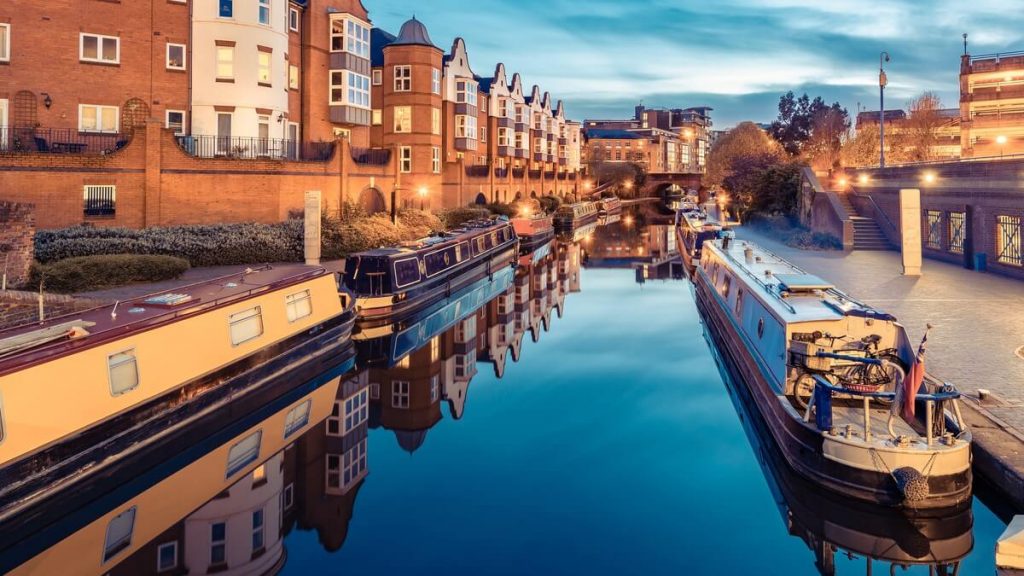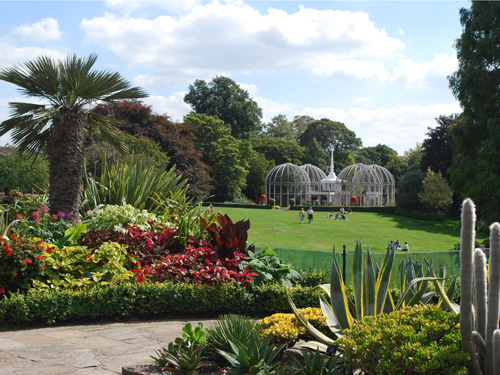Explore Birmingham
Explore Birmingham
Content contributed by our student Welcome Helpers
Birmingham is the second largest city in the UK, and is a short train journey away from Warwick University campus. It is a diverse, multicultural city with lots going on.
How to reach Birmingham
- By Car: A 30-40 minute car journey on the Motorway (M6) will take you to Birmingham.
- By Public Transport: Travelling by train is perhaps the best option. You can take the train from Coventry Station to New Street Station (in Birmingham city centre) in 30 minutes.
Points of Interest
The BullringLink opens in a new window
The one-stop shopping destination housing all high street fashion brands (including Selfridges and Debenhams!) you can possibly think of! From fashion to footwear, home to health and beauty, technology and toys, jewellery and jock wear (athleisure, if you will!), there is something to keep everyone in your family and friends engaged
The area just outside the Bullring is host to the best German Christmas Market and the one stop shop for all book lovers-WATERSTONES!
Connected by Bullring’s Link Street, Grand Central Birmingham is an absolutely phenomenal retail and restaurant paradise.
Birmingham Museum and Art GalleryLink opens in a new window
Only a 5-minute walk from New Street and 12 minute walk from Moor Street, the Birmingham Museum and Art Gallery can't be missed.
Alongside a series of pop-up displays, live events and art exhibitions, the museum hosts the award winning Edwardian Tearooms which offer a wide range of delicious food and beverages in a unique and historic setting.
To see what's on click here.Link opens in a new window
Cadbury WorldLink opens in a new window
Cadbury World is the chocolate factory which makes the classic Cadbury bars and other chocolate-y treats.
See how the chocolate is made, maybe try chocolate tempering and you can even book Afternoon Tea there.
Book your experience here.
Canal WalkLink opens in a new window
Fun fact: Did you know that Birmingham has more canals than Venice? Okay, I lied (but only slightly hey!). It doesn’t actually have more canals. Just more miles of canal. 35 miles of it to be precise. Birmingham canals makes for a picturesque walk after a good meal as the sun sets and fairy lights brighten this street Here are some options you have if you prefer to get into the water (on a boat, that is!)!1. Pack up a picnic and cruise on an electric, self-drive boat
2. Rent a boat
3. Kayak to your heart’s content
Photo credits ShutterstockLink opens in a new window
Botanical GardensLink opens in a new window
A 17–20-minute ride from New Street by bus or train the Birmingham Botanical Gardens and Glasshouses is a lovely place to spend the day. A total of 15 acres make up the gardens in its entirety! A lily pool and rich tropical landscaping may be seen at the Tropical House. The Sub-tropical House features palm trees, tree ferns, and orchids.
Outside, there is colourful landscaping on the Terrace, and a tour of the gardens includes the National Bonsai collection, aviaries, the National Rose Garden, the Rock Garden, the Herb and Cottage Gardens, the Museum, the Children's Adventure Playground, the Rose Garden, and over 200 different types of trees. Plant centre, gift store, sculpture trail, and refreshment pavilion.
Safer Students hosted by West Midlands Police
- Explore the West Midlands Police museum to find out more about crime prevention tips to stay safe at University and in the local area. Check out their website for exciting events.
Food and Drink
- Birmingham Grand Central - DishoomLink opens in a new window (Indian), TamatangaLink opens in a new window (Indian), MowgliLink opens in a new window (Indian), Tapas Revolution Link opens in a new window(Spanish), Sabai SabaiLink opens in a new window (Thai), Wagamama Link opens in a new window(Japanese), Comptoir Libanais Link opens in a new window(Lebanese), Caffe ConcertoLink opens in a new window (Italian).
- Cafes in the city centre - Faculty Coffee and TeaLink opens in a new window, Grand Central Kitchen Birmingham, Coffee TalesLink opens in a new window
Coventry
The University of Warwick is situated within the city of Coventry. A vibrant, multicultural and diverse place which was the UK's City of Culture in 2021. Only a bus ride away, it is worth exploring the city centre and all it has to offer.
Leamington Spa
Royal Leamington Spa is a picturesque regency town located in the heart of Warwickshire and is less than 10 miles from campus. Named after the River Leam, which flows through the town, Leamington Spa’s growth was largely due to the natural spa springs that were discovered and commercialised in the 19th century.

